
The bus ride to Medellín was an irksome experience. I boarded the bus in the Cartagena heat wearing shorts and a T-shirt. Freezing buses are normal in South America, so I was planning to grab a sweatshirt before putting my backpack in the luggage compartment, but forgot and only remembered five minutes into the trip when the AC cranked on. Soon it was literally about 50F in the cabin. I asked the doorman for a blanket, but there weren’t any. I asked to turn down the AC, but nope.
I spent the entire overnight bus trip with my arms inside my shirt, and froze my balls off. I woke up several times during the night shivering. I would vigorously rub my arms and legs to provide momentary warmth. It could be worse I told myself as I struggled to get back to sleep, and thought of my night on Volcán Acatenango in Mexico and Jack London’s To Start a Fire.
I woke up at 7am and admired the sun peeking between the hills, illuminating the dark green landscapes of the misty mountains. The bus wound through the hills and I watched the scenery of dense pine forest become increasingly urban. Eventually, it became a full-blown cityscape as we passed southward through the Bello neighborhood of Medellín towards the Terminal del Norte.
We arrived at about 8:30am, and I immediately put on a couple of layers as I disembarked the freezing bus into the typical cool, wet morning of Medellín. I hopped in a cab and jetted 15-minutes south to Black Pine hostel in barrio El Poblado. I still felt cold during the ride.
As I checked in, all I wanted to do was crawl under some blankets and bask in warmth for a few hours, but I learned my room wouldn’t be ready until noon. Instead, I made some piping hot coffee (from Café del Mural in Cartagena), which really hit the spot.
I headed out for a walk. Situated in a valley, Medellín is surrounded by dark green mountains which reminded me of San Cristobal, Mexico. My first impression was the city had a lot of vegetation and a wet, fresh climate with pure, crisp air that reminded me a lot of Portland, Oregon. After being in the heat of places like Costa Rica and Panama for so long, this was a welcome reprieve. Yet, it felt like I could be comfortable in either shorts or long sleeves. Many runners, bicyclists, and people walking their dogs were out in force. The birds sang and squirrels darted from tree to tree. I liked it.
I grabbed some groceries and returned home to make some breakfast.
In the living room, I met Colton from Boston, and we headed to the Jardín Botánico near the center of Medellín. We took the Metro, which I noticed was modern and immaculately maintained.
The botanical garden was a lovely sanctuary in the middle of the city. We walked around for a while admiring orchids, a cactus garden, and a pond with hundreds of ducks before it started to rain. We made our way under the shelter of the pavilion of a large amphitheater where we were trapped for more than an hour and a half as sheets of rain poured down. Colton and I played Monkey in the Middle with a group of five ~9-year-old kids and a soccer ball. The kids would pause the game sporadically to ask Colton and I questions about the United States, wide-eyed and curious if it was like the movies they’d seen.
After the rain let up, we walked around El Centro a bit before taking the metro back to El Poblado. I got situated in my room, and later Colton and I went out for dinner and few beers.
The next morning, I walked to a nearby park to do yoga, then played a Sunday worth of tournaments. I ended up coming 2nd in one and 6th in another to make a nice profit. After the day, my bankroll still wasn’t large enough to play in even medium stakes tournaments without significant risk of ruin. The small stakes grind is tougher than I remember. Not to worry, I will bink a tourney soon.
On Monday, I went on a free walking tour of Medellín. I’ve been on several of these free tours and they’re usually worthwhile, but this one in Medellín was fantastic. My guide, Maria, was cute, funny, and super knowledgeable. She didn’t hold anything back, going into history, politics, class, race, and, drugs in Medellín and Colombia. The tour even took us to some more seedy locations such as Parque Bolivar where addicts frequently congregate to show us the reality of the city, which despite its improvement and newfound international appeal still has the problems of any major city.
After the tour, I rode the Metro around the city exploring further. I was sold on the city. I decided I wanted to stay in Medellín for a while and get to know the place and take Spanish classes. I returned to the hostel in the afternoon, and started poking around for furnished, short-term apartment rentals. Most of the classifieds online had huge markups, gringo prices. I found a couple decent ones, and arranged showings for the next day.
That night I went out to dinner with Lilian from Paraguay, Daniel from Germany, and Elizabeth from the UK. We went to Chef Burger in La Zona Rosa, the trendy nightlife area of El Poblado. The burgers were incredible. So much so that Daniel and I ordered another to share despite already being stuffed.
Afterwards, Daniel and I headed out for a few more beers, and I got my first taste of Parque Lleras, a three block by three block area in La Zona Rosa with a park in the center surrounded by bars and discotecas. Some cynics might refer to Parque Lleras as Gringolandia, but in reality, it’s where the entire city of Medellín goes to party on any given night. Daniel and I barhopped and people watched, especially the incredible Colombian girls as they passed by in droves. I resolved not to make it a late night, and we took an Uber home at around midnight.

The next day I made my way around the city to see a few apartments. The first one I saw was near El Estadio, and later another in Poblado. I went to see a third in Poblado, but the lady didn’t show up and then never followed up with me via text or email. Neither of the two apartments seemed like very good deals.
I knew of a trick whereby you hire a taxi to drive you around looking for ‘Arriendo’ (for rent) signs, and then have the taxi driver call the number to inquire and arrange a showing. Hearing a native Spanish speaker, presumably Colombian, on the phone, the landlord will give the ‘real’ price, and then you could show up as a gringo to the showing. Or hire a person on Craigslist to find you an apartment for $50.
I decided to forgo the hassle of trying to save a few bucks, and called the owner of the apartment near El Estadio. I was able to negotiate a tiny discount of about 80,000 pesos per month and that the owner would provide more kitchenware including a blender, better pots and pans, and a large cutting board. They agreed and I arranged to move in the following day. It came out to about 1.6M Pesos per month or about $580 (~2750Pesos/USD).
I chose the location in barrio Suramericana / El Estadio because it was a neighborhood on the rise. It wasn’t the best neighborhood and not the worst. I reasoned would give me a more authentic experience of Medellín, as opposed to barrio El Poblado which is a posh area with a high concentration of travelers and digital nomads (read: gringos). Yet the Suramericana apartment was still close to stuff: right across the street from a metro station, only a five-minute walk to Carrera 70, perhaps the second biggest party area of Medellín, and only a 15-minute walk to barrio Laureles, which is the other posh neighborhood of Medellín, for higher end dining.
That night I went out to dinner and had a Bandeja Paisan, which is a platter of chorizo, carne asada (grilled steak), fried salchica (sausage), tocineta (bacon), chicaron (fried pork rind) rice, beans, avocado, and fried plantains topped with a few fried eggs. It’s a meal you eat just because it’s a Medellín thing. Whoa. It completely put me on my ass. I fell asleep about 30-mintues after returning home, at about 9pm. Crazy to think Paisas eat it regularly.
The next day, I moved into my new home at around noon. I settled in and then went to the supermarket to stock the fridge. In the afternoon, I began searching for a Spanish teacher online. In the evening, I went out to scope out the Carrera 70 vibe.

After I moved into my apartment, my daily life turned into a welcome routine that would generally consist of reading for an hour or two in the morning, yoga and meditation, brunch, Spanish classes, explore the city, dinner, study/read/write/poker/Netfilx/dates, bed. Instead of a narrative of my two months in Medellín, I’ll give you a rundown on some of the things I did, my observations of Medellín and Colombia, and some other random tidbits.
–Paisas: Paisa is the term for people from the Antioquia region in the center of Colombia. They are more purely of Spanish descent than indigenous South American. They are generally light skinned with thin lips, high cheekbones, and dark eyes and hair. Unlike most Latinos, they get sunburned easily. When you think of a beautiful Colombian girl, you’re probably thinking of a Paisa.
One thing you’ll notice immediately about Paisas is their hospitality. Politeness is a way of life amongst Paisas and they extend this to foreigners as well. Whereas westerners always like to get right to the point, Paisas always begin interactions with a warm greetings and chit chat before business. They always use please and thank you, and respond ‘con mucho gusto’ (with much pleasure) to anything you ask for. In fact, I heard that many vendors and businesses will actually charge more (or even deny service) if people are perceived as ‘grosero’ (rude) and don’t interact with a reciprocal level of courtesy. When dealing with other Colombians, Paisas have something of a superiority complex. They legitimately think they are the ‘best of breed’ and look down on people from different parts of the country. This is not conjecture. You can ask Paisas about this and they will proudly let you know they are the best.
Paisas are entrepreneurial and consider themselves very intelligent or ‘teso’ in this respect. They’re excellent sales people and always hustle to earn a buck. A perhaps unpleasant but relevant example would be Pablo Escobar who was Paisa. Medellín has many programs to sponsor Emprendiemiento (entrepreneurship), and recently received an award for the most innovative city in the world.
–Guatape: I took a day trip to Guatape with Do It in a Van Tours. It was very cool. Two super chill Colombian guys, Rafael and Diego, take tourists to the small town of Guatape in their vans (about two hours west), making several stops along the way.

We took off at 9:30am and drove through Miraflores, up into the mountains west of Medellín, and had breakfast at a beautiful, small farmhouse overlooking Medellín.
Then we stopped in the small town of Peñol.
Then we stopped at a bridge over a lake, to jump into the water 25 feet below.
Then we went to La Piedra, a massive rock near Guatape that juts more than 200m above ground. We climbed the 649 steps to the top of the rock for amazing views of the surrounding lakes, forests, and mountains.
After the rock, the guys made us a picnic lunch of traditional Colombian food out of the back of the van. It was one of the best meals I had in my two months in Medellín and they prepared it all over a couple burners and a barbecue. Super impressive.
Finally, they took us to the pueblo of Guatape, a small lakeside town where the homes and buildings are painted bright colors and most houses feature zócalos or squares painted with a design or some sort of image or scene, usually of the towns agricultural past.
–En Forma: The Colombians of Medellín are generally in good shape. There just aren’t a lot of fat people there (despite how much pan (bread) and pastries they eat). There’s a lot of outdoor, public gyms in parks, public basketball courts, soccer fields, sand volleyball courts, etc. that are always occupied. Not to mention, it seems like there is a gym every few blocks. Biking is ubiquitous throughout the city. The city has a free bike rental program and bike lanes that make it easy for people to bike commute. You can find hundreds of serious bikers riding the steep, twisting roads in the hills around the city during any hour of the day.
Each Sunday is the Ciclovia, a popular weekly event. The city closes several large streets, including Calle 48 right in front of my apartment which runs along Rio Medellín that bisects the city, and thousands of bikers, runners, roller bladers, skateboarders, etc leisurely tour the city.
Also, much of the food in Medellín is sourced directly from farms in the hills directly surrounding the city. There are several weekly farmers markets, and many vendors throughout the city selling all manner of homemade food stuffs. So, a lot of the local food is very fresh and organic.
–Botanical Garden: In the center of the city, near the University of Medellín, lies the lovely Jardín Botánico. The entry is free, and it’s a nice little natural refuge amid the surrounding urban jungle. I spent many afternoons reading or taking a siesta under a tree in the botanical garden.
–Metro and Metrocable: The Metro system in Medellín is a thing. An ambitious Mayor launched a program to construct it at a time when the city was still extremely dangerous and they didn’t have the capital to build it. Yet it was built nonetheless, and now stands as a symbol of the transformation of the city. The people are very proud of it. You will never see anyone so much as throw a gum wrapper on the floor, lest they be ostracized by the rest of the passengers. Nearly everyone in the city uses it from the wealthy to the super poor—a good place to get a real glimpse of the people of Medellín. It’s clean and efficient, and makes much of the infrastructure in the US look comparatively shabby.
Part of the Metro system is the Metrocables—gondolas that transport people who live high in the hills down into the valley. The Acevedo Metrocable line takes you 40-minutes up into the hills. At the top lies Parque Arvi, a lovely nature reserve of dense cloud forests. The park offers tours through the forest in which guides point out flora and fauna of the region. I went up to Parque Arvi a couple of times to hike and enjoy nature away from the hustle bustle of the city.
–Cerro El Volador: About a 20-minute walk north of my apartment lies Cerro Volador, a big hill or small mountain smack dab in the north central area of the city. It takes about 45-minutes to hike to the top of the hill, and at the top is a nature reserve and butterfly sanctuary. Atop the hill has amazing views of the city. People gather at the top of the hill to picnic, fly kites, get high, and relax. It was another of my sanctuaries where I went to lay in the shade, get some fresh air, and escape the madness of the urban jungle.
–Jason: One night while wandering Carrera 70 (after getting blown off by a Tinder date), I saw a guy wearing a Cubs hat, we got to talking, and I met my buddy Jason from Chicago. Jason is a writer who received a large advance from a major US publisher. He’s been living in Medellín for a year and a half to stretch the book advance while writing.
Jason is a super cool, down to earth, and intelligent guy that I was glad and lucky to have met. We became teammates, hanging out and partying a bunch. He knows the city well and relished opportunities to be my guide, particularly to the underworld of the city. Though I wasn’t particularly interested, he would get giddy to show me how to get any number of illicit things. Though the last two sentences might make Jason seem shady, he’s a good guy who just enjoyed the liberty and certain destigmatized aspects of life in Medellín.

–Nathaly: I was also lucky to find my amazing Spanish teacher, Nathaly, via Craigslist. Twenty-five and very cute, when I first met her, I was somewhat incredulous. However, she has degrees in Spanish and Linguistics, and quickly allayed my doubts. We had four or five two-hour classes at a park or café each week for two months.
As you might imagine, we got to know each other quite well and became good friends. Although she would show up each day with a lesson plan and attempt to teach me grammar, we’d mostly just pass the time having conversations in Spanish about all manner of things. She became incredibly interested in my lifestyle, and I taught her a lot about diet, yoga, meditation, business, and Bitcoin (I may have made a new convert). As much time as we spent together, I’m ashamed to say, I didn’t even manage to get a picture with her. I plan to continue my lessons via Skype once I return home.
–Cervezas en la Tarde: In Medellín there are infinite bars, cafes, and restaurants that have table and chairs under awnings on the sidewalks where people gather to have beers in the afternoon. This is common throughout Latin America, but in Medellín it’s more universal and seems like everyone in the city takes part. Starting at lunchtime, the sidewalks slowly start to populate until the evening when the tables and chairs are full of people. Heck, even small tiendas (shops or corner markets) and licorerias (liquor stores) have tables and chairs out front for this purpose. Younger people gather in parks with a couple beers in the afternoon. It’s an alluring daily ritual.
When I first got to Medellín, I tried to fit in with the gente and would go to cafés for an afternoon beer. I must say, I like the idea of it. Seems very European and refined or something. This lasted maybe two weeks before I started avoiding the ritual. Sometimes, I’d manage to have just one beer and go on with my day, but most of the time one beer turned into 3, 4, or… you know. I normally wasn’t getting drunk, but I’d end up unproductive in the evening and in bed early. Plus, I started noticing how groggy I’d feel in the morning after even just a few beers. One beer, no problem. But two or three and I started noticing micro-hangovers and brain fog. Ugh. Why can’t my liver just work like it did when I was 23?
–Dating: It was pretty easy for me to get dates in Medellín. I met two nice girls in cafes. They were just staring at me, being the token gringo in the café, so I said hi and one thing led to another… easy game. I even had a girl just walk up to me and hand me her number.
Tinder is commonplace in Medellín too. I’d often see girls on the Metro or just walking down the street swiping or chatting on Tinder. I used it a lot too and went on several fun dates. However, I also got blown off after arranging a date more than a few times. Jason and others, told me this was normal and many Paisa girls are extremely fickle.
I was also told some girls’ mothers in Medellín tell their daughters to find a man with blue eyes, so they can have beautiful children. Hmmm maybe that’s why it was so easy for me…I’ll take it!
–Sexuality: Medellín is a sexy city. Women like to show a little skin and be flirty. Walking down the street in a popular area, you might see two or three sex shops in a two-block span. There’s a lot of open sexuality and sexual empowerment going on. A girl told me that many of the women in Medellín identify as bisexual. I didn’t doubt the veracity of the claim. You see a lot of same sex couples in Medellín, but I seemed to see more girl/girl lovers than in any place I’ve ever been.
It is one of the world’s leading destinations to receive cosmetic surgery. There’s a lot of women with big, fake boobs. Even butt-jobs. I met a middle-aged guy from Chicago who was in town with his wife to have her boobs done… for 25% of the cost back home, flight included.
The strip clubs are luxurious and incredible for both the women and the dazzling shows you will see. Many strip clubs also double as brothels. Which brings us to prostitution. It is legal in Colombia. Despite being a largely Catholic city, there seem to be few moral qualms surrounding sex work. I’m not sure if it’s because the practice is so prevalent that they are desensitized or just a laissez faire attitude, but prostitution is accepted. As such, Medellín has developed somewhat of a reputation as a sex tourism destination, but I didn’t really see it. Granted I’m not frequenting sex parlors, but the two times I went to strip clubs, my buddy Jason and I were the only gringos in the places.
–Anecdote: One afternoon I was leaving Éxito (the Walmart of Colombia). I had bought like 25 lbs. of fruit and vegetables, and the cashier managed to fit it all into two plastic bags (single bagged). I knew it was bad news, but thought I could make it the two blocks to my apartment without incident. Bad call.
I made it about 50 steps out the door. I had just passed two elderly lottery ticket vendors when my bag burst. I was heading down a ramp as well, so everything from the bag hit the 30ish degree incline of the ramp to shoot apples, mangos, limes, avocados, etc through the parking lot and street.
Right as it happened, one of the lottery vendors let out a heavy, “Diiooossss Miiooo” (My God), and I just burst out laughing. It was just one of those things where the way the guy said it, in light of the situation, was so amazingly perfect that I couldn’t help myself. I laughed so hard I had tears coming to my eye. Latinos are normally dramatic and the normal reaction to something like this would be to melodramatically curse the heavens. Juxtaposed by my laughing, I think the lottery vendors thought I was mad.
Despite my perceived lunacy, the vendors, a security guard, and several other Colombians including a ~5-year old child sprang to action and chased down all my fruit. One guy even ran into the store and got me several new bags. It was one of the moments during my travels where I most felt like a giant bonehead, but the lovely Colombians redeemed the situation to make it into one of great joy and gratitude.
–Pablo Esocobar: Unfortunately, Medellín is most well known throughout the world as ground zero of the Colombian drug cartels during the 80s and 90s. And of course, Pablo Escobar, the kingpin of the Medellín cartel, is infamous the world over.
In Medellín, the man started as something of a Robin Hood-like folk hero, renovating slums and giving money to the poor. Yet, due to drug wars that emerged between the Medellín cartel and the government, the legacy of Escobar is that of bloodshed and tears. It’s very real, and many people in Medellín have lost or know someone who died amidst the horrific conflicts.
Amongst the majority of the population, the man is so despised and the people want to forget and heal so much, that residents refuse to use his name, and instead refer to Escobar as “The One Who Shall Not Be Named”, “The Country’s Most Notorious Criminal”, or the like. Yet, in contrast, some in the city still relish his rags to riches story and the empire he created, or want to profit from Escobar’s notoriety, selling memorabilia, books, Pablo Escobar tours, etc. So you still see his likeness throughout the city.
A taxista put it like this: the legacy of Escobar on Medellín is something similar to Al Capone on Chicago or Hitler on Germany—many innocent people died because of him, and it’s not something to be proud of, but it happened nonetheless and, for good or bad, one must accept that it is part of the history of the place.
–Narcos: I watched the entire second season of Netflix’s Narcos during my time in Medellín. If you haven’t seen it, Narcos is a great series. Terribly violent, so much so that some scenes were difficult for me to watch. Yet, great nonetheless. It was cool to watch the show, set in Medellín, with a better understanding of the city and see scenes in places I recognized.
One night I was watching it with a girl I dated a few times. A scene came on where Pablo Escobar’s sicarios went around Medellín shooting army and police officers to send a message to the government. Marianna started getting emotional. She had told me previously her father died when she was young and she never knew him. Now she explained her father was police and killed by one of Escobar’s thugs, just like in the scene we watched. I felt horrible. The legacy and impact of Escobar really hit home in that moment and I began to understand how deep the scar tissue from the drug wars run.
–“No Da Papaya!”: This is a common phrase in Colombia. “Don’t give papaya.” It means don’t give others the opportunity to take advantage of you. For instance, if you leave your bike unlocked on the sidewalk, you’ve given papaya. Colombians believe that if you give papaya and are subsequently robbed or otherwise taken advantage of, it’s your fault, and has nothing to do with the robbers (robbers gon’ rob!). You invited it upon yourself. You deserve to have your bike stolen. Perhaps an interesting way of thinking which highlights the Colombian culture of personal responsibility.
–Racism: It seems one can’t escape prejudice no matter where you go in the world. In Medellín, I noticed that black Colombians are discriminated against regularly. It’s hard for them to find even normal jobs, let alone good jobs. In bars and restaurants, the black servers did the job until it was time to pay, and then someone else came over to handle the money. A negrita girl originally from Cali told me it’s very hard for her to make friends in Medellín: no one speaks to her, and if she tries to speak with someone, they normally give one-word answers and end the conversation quickly. They get harassed and searched by police a lot. The blacks just generally have to put up with a lot of bullshit here. Yup, somethings are the same wherever you are.
–Bitcoin/Cryptocurrency Surge: During my time in Medellín, the third great Bitcoin bubble began. Although I’d heard of it earlier, I first started really digging in and researching Bitcoin in early 2013. I quickly realized the magnitude of it as an invention and force for shifting the tides of history, and soon made my first purchases. Not even two months after I started buying, the Bitcoin price went parabolic during its second major bubble. The price rocketed from $60 to more than $1200/Bitcoin before crashing and trading between ~$200 and $600/Bitcoin for the next four years. During the bubble, I remember it being like crack to check the price and see it increase 10%+ in value each day.
In the beginning of this year, the price began taking off again. A lot of new users began buying, particularly in Asia. The price started to go parabolic in May, and I know the new users were experiencing the crack-like sensation I experienced. It was extremely interesting to watch this take place with the perspective I gained four years prior. I spent many hours charting and trading Bitcoin during my time in Medellín.
[In retrospect, the recent price surge is somewhat different than the previous bubbles. This time the price is taking more healthy breaks during the rise, perhaps because more institutional, “smart money” has entered the space (interestingly, I noticed two of the biggest volume days for cryptocurrencies during late May were the two lowest volume days for the S&P). Furthermore, this time it’s not just Bitcoin, but the entire cryptocurrency space that has ballooned in value. I’m excited to see what happens. I truly believe cryptocurrency is an idea whose time has come. I believe this may be a watershed moment and the beginning of widespread adoption. However, there were almost certainly be another crash soon.]
–City on the Ascent: Medellín is transforming. Capital is flowing in. There is construction all over the city. The government heavily promotes education. The young people are entrepreneurial. Artists have returned to the city. The quality of life is rising.
Compared to being the most dangerous city in the world 20 years ago, the transformation is almost unbelievable. So much so that many people over about 45, whom lived through and vividly remember the violence and calamity of decades past, still can’t seem to believe that foreigners would willingly travel to Medellín (gringos in our city!?). Others will give you heart melting smiles knowing that your presence is a testament to the redemption of the city.

What more can I say. Something about Medellín, ‘The City of Eternal Spring’, grabbed my attention on my very first day and told me to stay for a while. I heeded the call, and am glad I did so. Medellín is a lovely city with a lot to offer. I have no doubt I will be back soon.

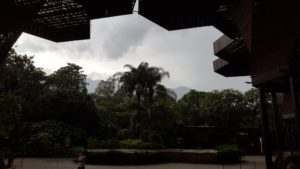
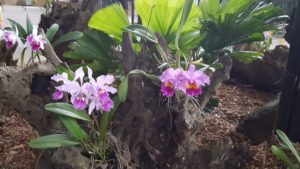
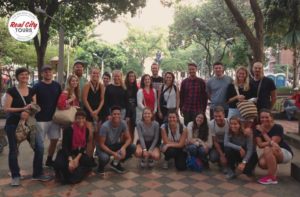
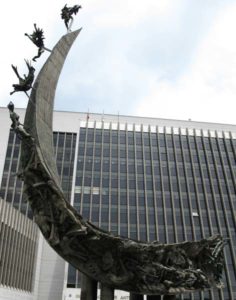
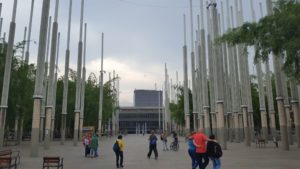
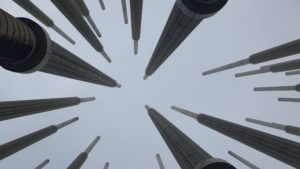
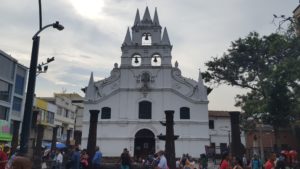
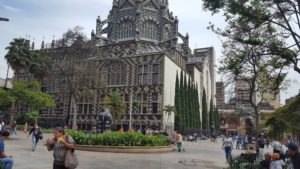
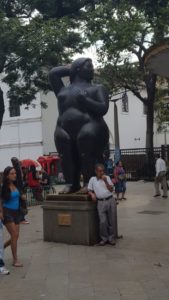
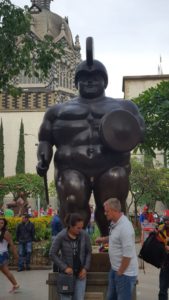
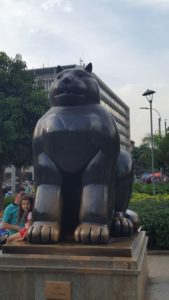
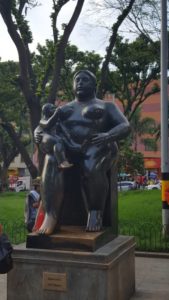
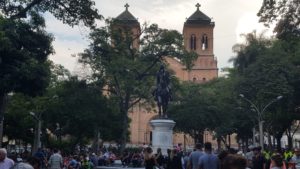

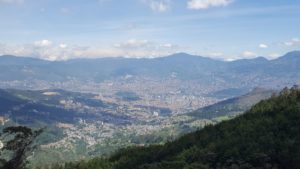
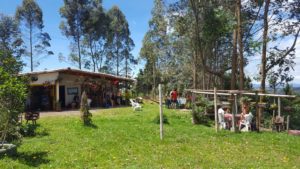
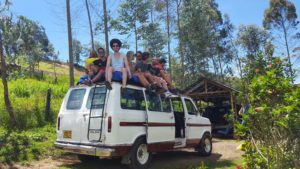
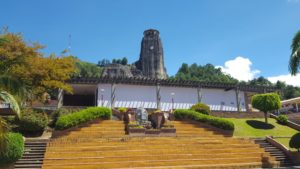
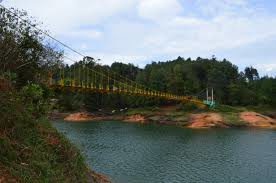
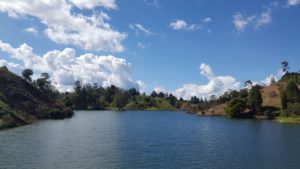
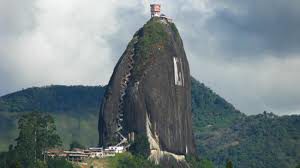
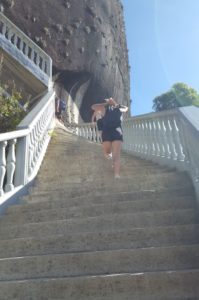
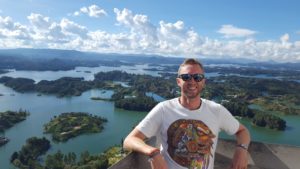
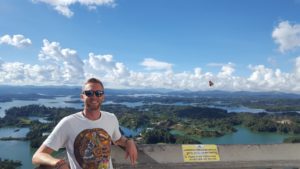
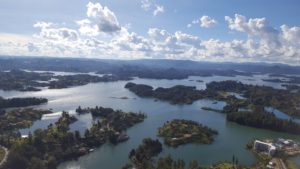
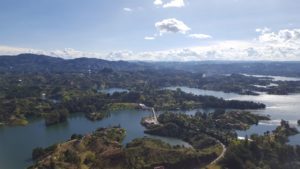
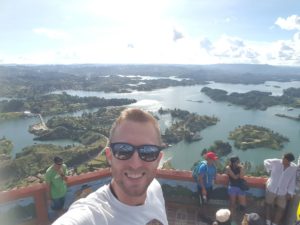
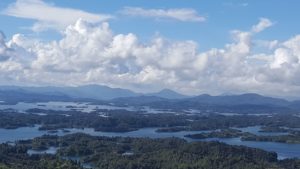
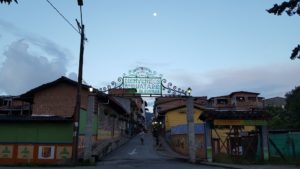
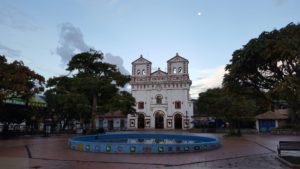
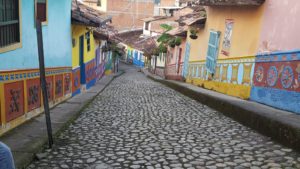
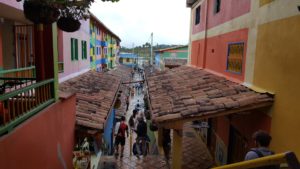
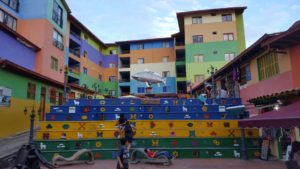
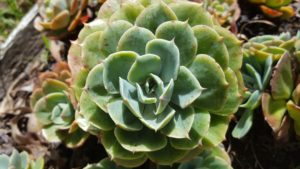
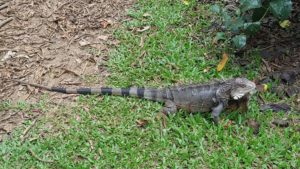
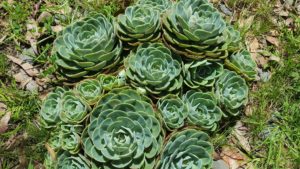
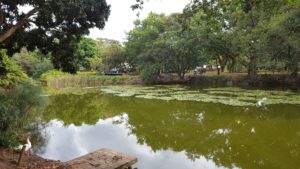
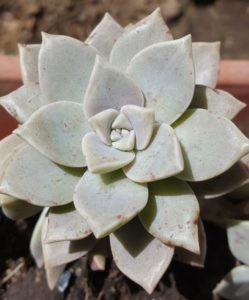
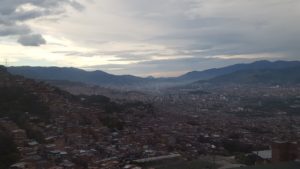
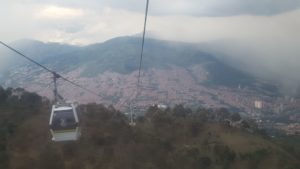
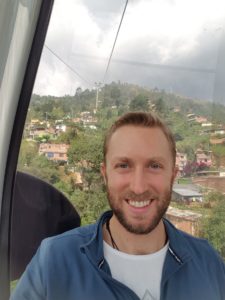
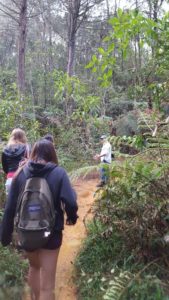
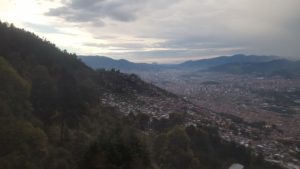
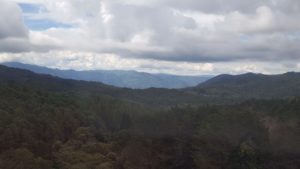
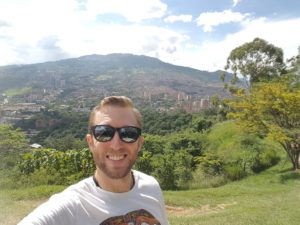
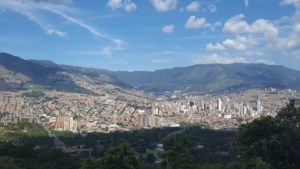
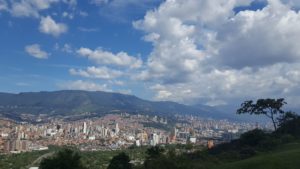
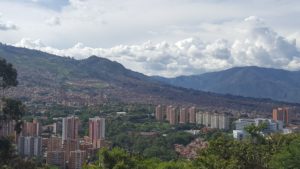
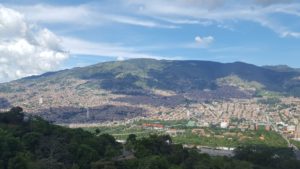
Sounds like we could use some papaya stateside!
The post was great, but got better when I saw my name on it 😜
Merry Christmas!!!